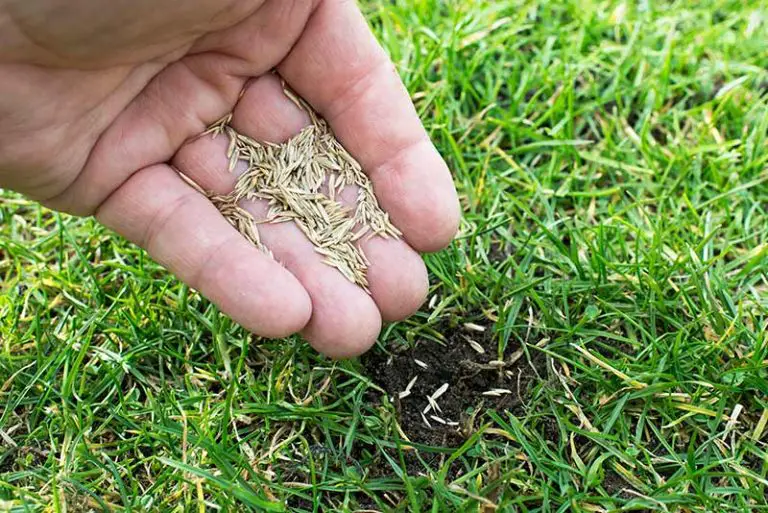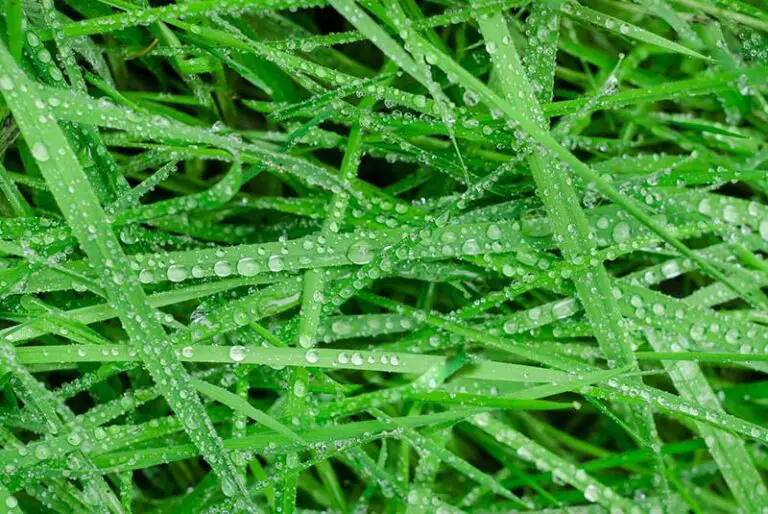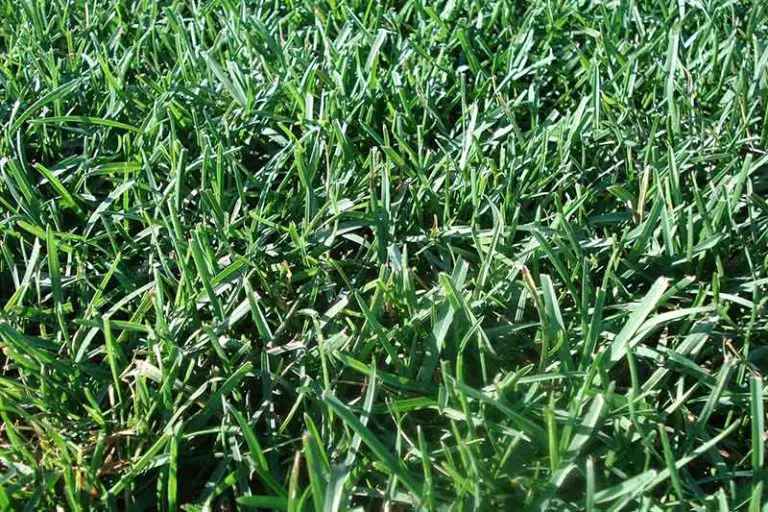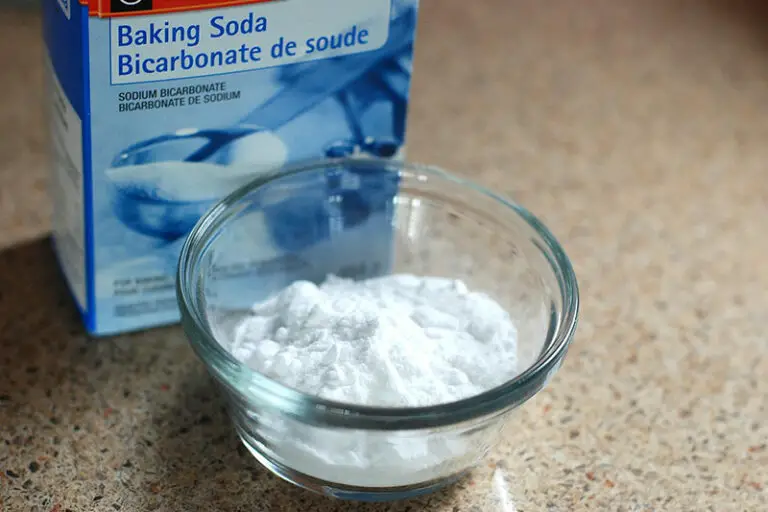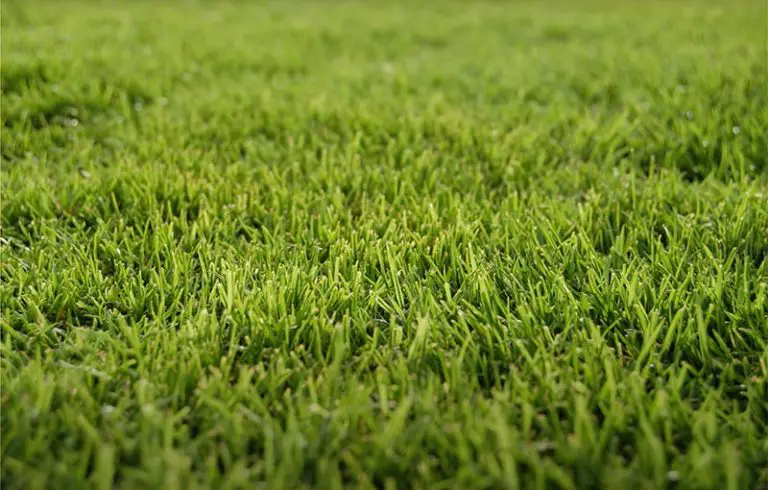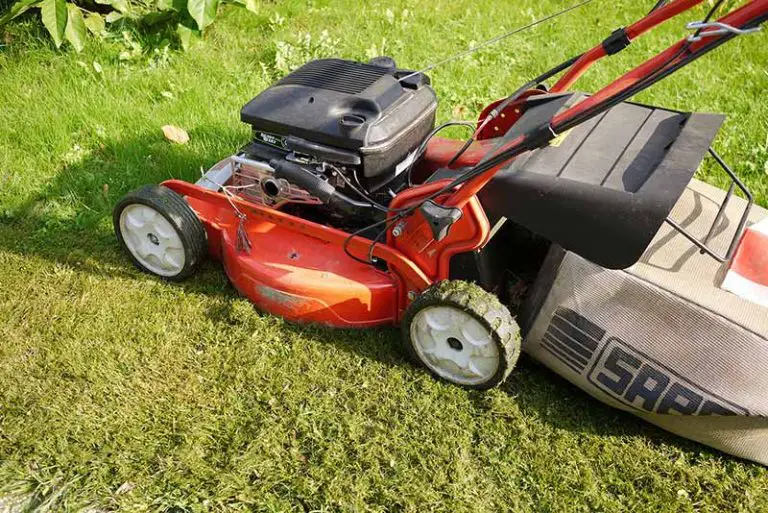Will Grass Seed Grow If Not Covered?
If you’re looking at seeding a new lawn, or overseeding a lawn that is becoming bare and needs thickening up to cover bald patches or thin areas, there are a few things you’ll need to know. One of the things you might be wondering is will grass seed grow if not covered?
Grass seed will be able to grow if not covered, but it is usually advantageous to add a layer of compost, topsoil, or mulch over the top of your seed to keep it moist and help with germination.
Grass seed can germinate even on the soil’s surface, but you will get much lower germination rates than if you properly prepare the soil and rake the seed into the ground. You may also end up with poor quality grass and feeble plants if you don’t put a little time into preparation first.
Why Can’t I Just Sow Seeds?
It might seem that just sprinkling the seeds and hoping for the best is the easiest option – and it is, in a way. You will get results as some seeds will manage to germinate and root, but they’ll be met with a whole host of problems that will massively reduce the value you get from your grass seed and the results you see.
Let’s take a look at some of the issues you might experience.
Birds Eating The Seed
If you leave the seed on the surface of the soil, it’s going to get munched fast by hungry beaks. Birds will be quick to take the seed and eat it, and obviously, it’s not going to germinate then. Burying the seeds under a light layer of earth is the best way to protect the seeds from birds.
Poor Root Development
Your seeds may germinate (if they don’t get dried out in the sun), but they will probably struggle to get their roots down into the topsoil if you haven’t put time into preparing it first. The soil at the surface can get very compacted, and it is hard for baby seedlings to push into it.
If your grass seeds can’t get their roots into the soil, they will struggle to take in nutrients and water. They may survive, but will often be weaker and more susceptible to being crushed underfoot as a result.
Getting Washed Away
Seeds that haven’t germinated have no protection from the rain – and even seedlings that are starting to sprout will not have the root network needed to anchor themselves properly. If they don’t have a protective soil layer on top of them, many seedlings will simply be washed away in the rain.
This will prevent them from filling in the gaps, even if they go on to germinate wherever they get washed to, and your lawn will remain thin.
Grass seeds can take one to two weeks to germinate, so even if there is no rain predicted in the near future, they are likely to experience some before they are established. Even if it doesn’t rain, you will find it hard to water uncovered seedlings without disrupting their growth and causing them to clump together.
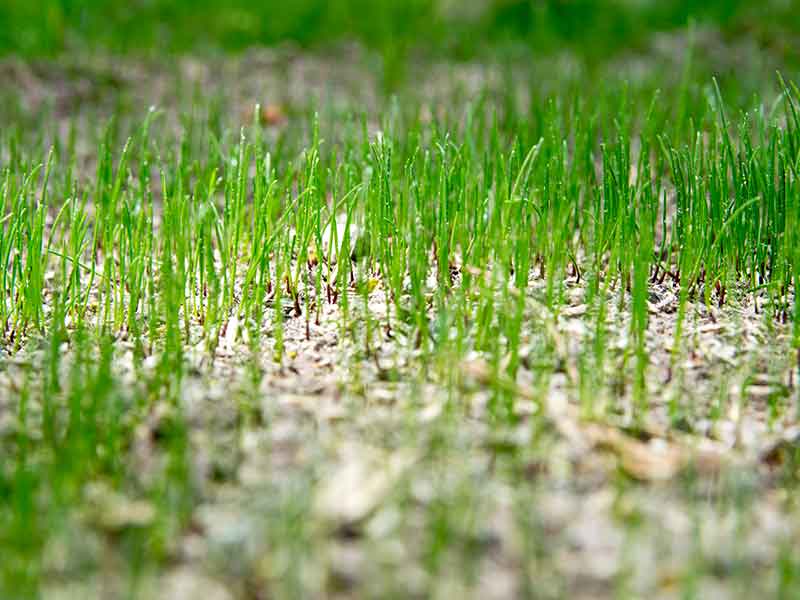
Preparing The Soil
So, in order to prepare the soil to maximize your grass seeds’ germination and growth rates, you’re going to spend a bit of time on hard labor.
Start by clearing the area of any vegetation that you don’t want. Strip out old plants, rake away roots and debris, and make a nice, empty space. You can use a variety of garden tools for this job, but you don’t want to actively be shoveling away your topsoil, so a spade may prove a little over the top.
Once you’ve cleared a space for your grass seed, you can start actively preparing the ground to give your little seeds the best possible chance. You may find that you only need to aerate the soil (if you are going to add a cover on top instead of raking the seed into your existing soil).
You can use a garden fork or any pronged tool to gently aerate and loosen the ground. This deals with compaction issues and makes it easier for the grass seed to take firm root in the soil. It also adds oxygen and breaks up any plant matter that may make it harder for the grass to root.
Clay soils and areas with lots of footfall are more likely to be compacted and will benefit more from aeration. You will find that aerated soil has improved water absorption and helps your grass’s roots to develop and anchor themselves properly. Aerating your soil also improves the effectiveness of the activities you can do after aeration, such as adding fertilizer or overseeding.
If you are planning to rake your grass seeds into the existing ground, spend more time loosening and aerating than you would otherwise do. If you plan to add a cover on top of them, you do not have to take as long on this (though the more you do, the better your results will be).
Aeration is really important, as it will let the seedlings establish roots in the existing ground and this will result in much stronger plants that will need less watering (as they will be able to reach deeper into the ground) and have better resistance to being walked on.
Will Grass Seed Grow If Not Covered?
Yes, grass seed will grow if you don’t cover it – most of the time. If they do not get eaten by birds, baked in the sun, or washed away, some seeds will germinate and grow, but they are unlikely to be strong, and may struggle to get their roots into the earth.
It is much better to cover the grass seed; although it may seem like more work initially, it will increase your germination rates and give you much healthier plants than simply tossing it around.
Raking and covering the seed also helps to disperse it through the soil, ensuring that it is not so clumped up that the baby seedlings will be fighting each other – another thing that leads to weak plants.
What Should I Cover It With?
You can simply rake the grass into your existing topsoil, especially if you have thoroughly aerated the soil. This is the simplest and perhaps cheapest option, but it may not produce the best results for a number of reasons.
Firstly, the grass seed may not end up deep enough down to mitigate the issues mentioned earlier. Grass seedlings ideally want to be buried about an eighth of an inch to a quarter of an inch deep, and this is easier to achieve if you spread a layer on top of them than if you are trying to push them into an existing layer.
Secondly, your topsoil’s nutrients may have been depleted by the previous plants (particularly if the spot was already covered by grass) and therefore the grass seedlings may struggle to find the nutrients they need.
It is better to provide a layer of mulch or compost to cover up the grass seedlings and feed them at the same time, and you have a lot of different options happily. We’ll run through them now.
Topsoil Or Compost
Since you can plant directly into your topsoil, you obviously can also buy topsoil to cover your seeds with. This will have more nutrients in it, and it will also provide structure and protect the seedlings.
Compost, similarly, will provide a burst of nutrients, usually in greater quantities than topsoil; this means grass seed will grow in compost successfully. The downside, however, is that it will be less protective and offer less moisture retention.
A mixture of the two is often a great way to cover your grass seedlings and ensure that they thrive. You can buy a bag or two of topsoil from any garden center, and buy or make your own compost at home. Simply mix them up and spread them over your seeds to protect them and give them a good start.
Lawn Clippings
If you have plenty of lawn clippings going spare, these can also be a great way to cover your seeds, although you do need to be careful not to smother them. Do not just dump the contents of your lawnmower onto the seedlings.
Instead, you need to take the clippings and let them dry for a while. Once they are dry, you can spread a thin layer above the seeds and this will protect them from the sun and the rain. You do not want a thick layer, or the seedlings may be smothered and unable to reach the light.
Over time, the clippings will break down into the soil, providing nutrients to the grass and letting the young plants break through.
Straw
You can protect your seedlings using a thin layer of straw as another option. You will want straw that has no seeds (which may sprout and cause weeds in the new lawn) and only a very small amount on top of the seeds.
Remember that air and light need to be able to reach the seedlings, and they need to be able to push through the layer as they start to grow.
When your lawn is established and the seeds have germinated and rooted themselves well, you can rake up the straw and remove it, or simply mow it in on top of the grass if you prefer. Either method will result in a healthy lawn with plenty of germination.
You may want to check that the seeds are germinating beneath the straw when you first lay it. Simply slide a cane or stick under the edge and lift it gently to check for green sprouts. If you aren’t seeing any germination after a month or two, you may need to thin the layer a bit because it might be too thick.
How To Reseed An Established Lawn
If you are looking to reseed a lawn that is already established, you may have a slightly different experience. Firstly, it will depend on whether you’re filling in bare patches, or just trying to thicken a lawn that is in existence.
If you’re filling in bare patches, make sure you bring the soil to the level of the rest (if it has been scooped out or damaged in some way). A mixture of sand and topsoil should be able to achieve this. Having a level lawn is good for creating even drainage, and will make it easier to mow over – you can follow our guide How to Level a Yard for a step-by-step guide on how to carry this out.
Next, you’re going to want to clear and aerate the soil as described above. Remove any weeds and loosen up the compaction to ensure that your seeds can anchor deeply into the ground. Follow the above directions, seeding the grass carefully over the whole area, and then covering it up.
If you’re reseeding a thin lawn, you will have to take a slightly different approach, as you obviously cannot rake the ground without destroying your existing grass.
In these cases, you may be able to just sprinkle in the seed; the old blades will provide cover from the sun, protection from birds, and structure to stop the seedlings from being washed away. The seeds will slowly work their way down into the soil and sprout from there.
However, the ground may still benefit from aeration; this is generally a good practice whenever you’re planting something new, and it will improve the seedlings’ chances of rooting well. You can use a garden fork for small areas, but if you’re reseeding a whole lawn, you may want to hire a core aerator or get professionals in.
Working over the full area with your fork will probably prove too much, but this aeration can give your seeds the best start in life and ensure the reseeding has the desired effects, thickening your lawn.
Aeration may also improve the health of the existing grass, increasing oxygen flow and making it easier for the grass to put down new roots and tap into nutrients.
Conclusion
So, if you’ve asked the question will grass seed grow if not covered, you now have an answer: yes, but only if it doesn’t get eaten by birds, baked by the sun, or washed away. Your grass seed has a much better chance of germinating and growing into strong new plants if you provide it with protection.
Plant your seeds about a quarter of an inch down under a loose dressing of topsoil, compost, straw, grass clippings, or mulch, and allow them one to two weeks to germinate. This layer will protect the plants and feed them, giving them the best chance of successfully growing into a strong new lawn for you.

